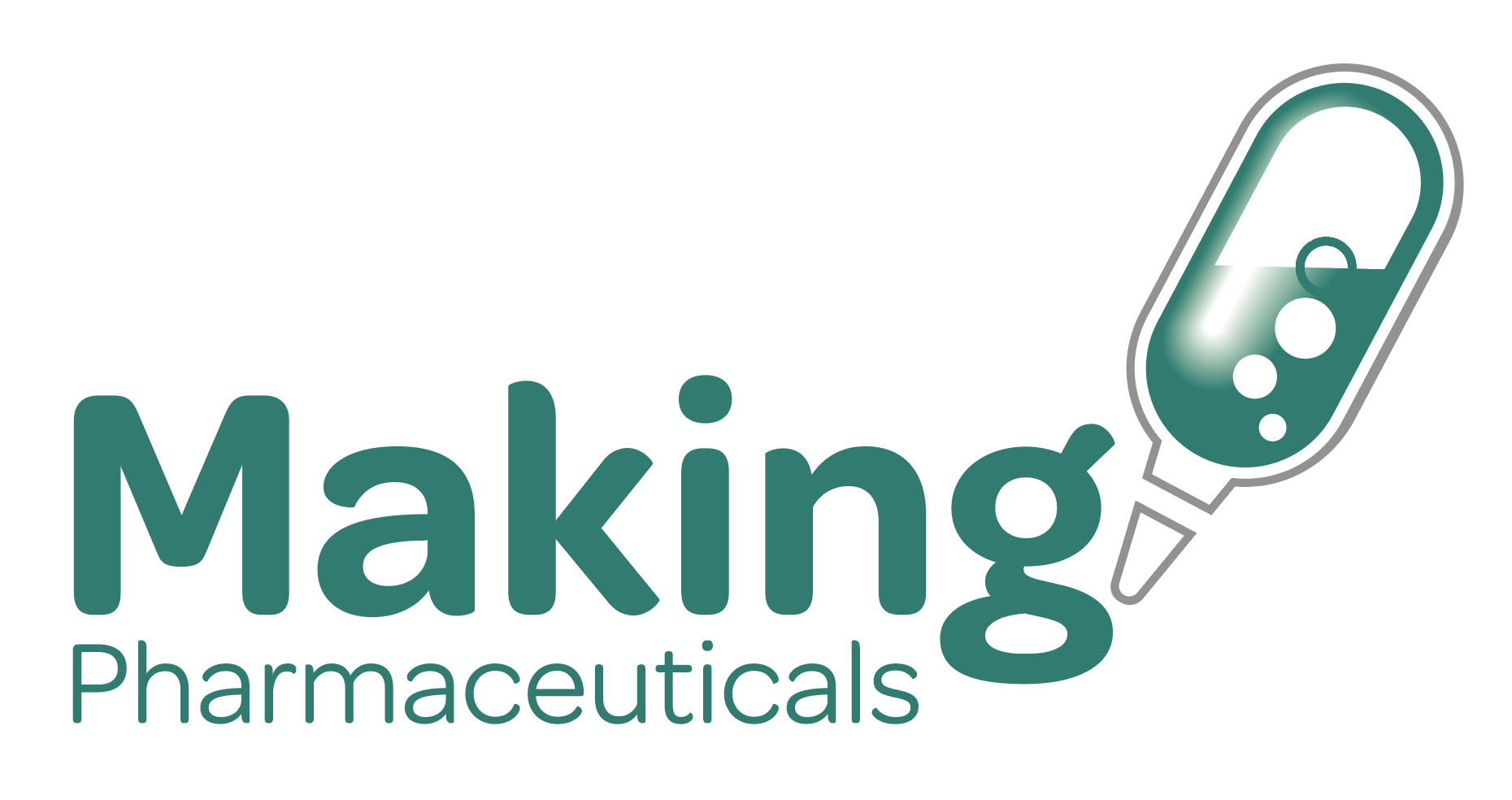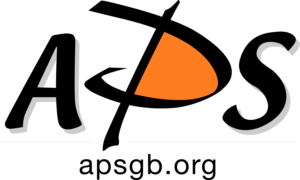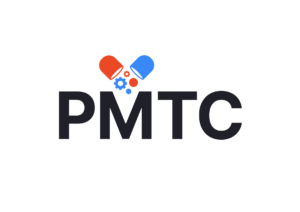
Bridging the Skills Gap in the Pharma Industry
Speakers
 Amy Dillon Skills Enhancement Tutor - Edinburgh Napier University
Amy Dillon Skills Enhancement Tutor - Edinburgh Napier University Dr David Mincher Reader, School of Applied Sciences - Edinburgh Napier University
Dr David Mincher Reader, School of Applied Sciences - Edinburgh Napier University


11-09-2024

Speakers
 Amy Dillon Skills Enhancement Tutor - Edinburgh Napier University
Amy Dillon Skills Enhancement Tutor - Edinburgh Napier University Dr David Mincher Reader, School of Applied Sciences - Edinburgh Napier University
Dr David Mincher Reader, School of Applied Sciences - Edinburgh Napier University
Speaker
 Dr Bahijja Raimi-Abraham Lecturer in Pharmaceutics - King's College London
Dr Bahijja Raimi-Abraham Lecturer in Pharmaceutics - King's College London
Speaker
 Dr Jonny Coulter Reader, School of Pharmacy, Material and Advanced Technologies for Healthcare - Queens University Belfast
Dr Jonny Coulter Reader, School of Pharmacy, Material and Advanced Technologies for Healthcare - Queens University BelfastSustainability is integral to everything we do. From the raw materials we source and the way we use them, to the ingredients we create, we believe in being a responsible company
By 2030 we will be the most sustainable supplier of innovative ingredients, helping to provide solutions to some of the world's biggest challenges.
Excipient manufacturers are making steps towards strengthening and ensuring a sustainable pharmaceutical supply chain through reducing use of fossil fuel energy sources, improving energy efficiency of manufacturing processes and purchasing raw materials from suppliers aligned to the net zero journey.
The transparency and consistency of reporting sustainability throughout the supply chain is imperative to its success.
Speaker
 Christian Wells Lead Application Scientist for Pharma - Croda
Christian Wells Lead Application Scientist for Pharma - CrodaThis presentation will review and highlight the importance of surfactants in the production and formulation of biological actives for the biopharma industry. It will introduce and explain BASFs approach to this key class of functional materials for the biopharma industry, and the impact of excipients on biologics formulations. It will also cover the effect on stability under different stress conditions and also discuss alternative surfactants polysorbate 20 and 80: Poloxamer 188 (Kolliphor® P 188 Bio), Kolliphor® HS 15, Kolliphor® ELP).
Speaker
 Dr Philipp Hebestreit Technical Manager - BASF
Dr Philipp Hebestreit Technical Manager - BASFExcipients are typically the major components in a drug product. Many formulations contain only a small percentage of the active drug molecules. Pharmaceutical excipients or additives are compounds added to the finished drug products to serve a specific function.
Injectable products require a unique formulation strategy. The formulated product must be sterile, pyrogen-free, and, in the case of solution, free of particulate matter. No coloring agent may be added solely for the purpose of coloring the parenteral preparation. The formulation should preferably be isotonic, and depending on the route of administration, certain excipients are not allowed. The injected drug by-passes natural defense barriers; hence, for any given drug, the risk of an adverse event may be greater or the effects difficult to reverse if administered as an injection rather than a non-parenteral route. For this reason ultra-high purity grades of excipients are available for parenteral administration. Sterility requirements demand that an excipient is able to withstand terminal sterilization or aseptic processing. These factors limit the choice of excipients available in the market. With the new products for Clariant the choice of excipients have increased for parenteral formulations and in the presentation we will discuss the new product range.
Speaker
 Shilpa Mistry Head of Pharma, UK and Ireland - Chemlink Specialities Ltd
Shilpa Mistry Head of Pharma, UK and Ireland - Chemlink Specialities LtdA critical decision to secure the purity and safety of goods produced in controlled environments is how to seal off a Clean Room or Controlled Atmospheric Area.
This technology insight will cover door solutions for clean rooms including those with conveyor integration and robotics solutions. It includes the most modern touchless opening technologies to help the listener holistically evaluate the complete solution.
A discussion around Future Proofing Clean Rooms with the potential of Connected Door Solutions, integration per BUS Systems or with Building Management Systems, rounds off the digital potential of doors in a connected factory.
Assa Abloy is the global leader in the research, design, manufacture and support of a range of Automated Industrial and Commercial Doors.
Employing a team of over 50,000 globally, the customer is at the centre of everything we do.
Speaker
 Derek Walsh ASSA ABLOY Entrance Systems Ireland
Derek Walsh ASSA ABLOY Entrance Systems IrelandThis presentation will look at the path of regulatory guidance over the last decade, in the context of container closure integrity inspection for pharmaceutical product packaging and help explain what this means across the manufacturing life-cycle.
We will cover why different approaches and justifications need to be considered for different stages of product development and manufacture and look at emerging technologies and where they fit across these various stages.
Speaker
 Tim Commane Director of Life Science - IPP Group
Tim Commane Director of Life Science - IPP GroupBiocatalysis provides great capabilities for the synthesis of interesting API (precursors) such as chiral amines. However, enzymes are often limited by the solubility of hydrophobic substrates in aqueous reaction environments. By employing enzyme engineering and switching the solvent system, these issues can be overcome, and very efficient reaction systems can be designed.
Speaker
 Jan-Dirk Spoering Enzymaster
Jan-Dirk Spoering EnzymasterCompaction simulators offer the capability to replicate tablet compression parameters at production scale right from the development steps - using minimal material quantities. This presentation will focus on the fundamentals of compaction simulator design and will present several case studies around material characterization, formulation development, scale-up and troubleshooting of tablet defects. It will highlight the correlation between tablet properties produced on a compaction simulator and tablets manufactured on a high-speed production press, for single layer, multilayer and tab-in-tab application.
Speaker
 Delphine Ach-Hubert Formulation Scientist - MEDELPHARM
Delphine Ach-Hubert Formulation Scientist - MEDELPHARMDrug development is a long road with many dead ends to avoid. Part of the journey involves understanding the spatial distribution of active pharmaceutical ingredients (APIs) and excipients, investigating final product homogeneity and differentiating chemically similar molecules such as polymorphs, to guarantee product quality and to maximise process efficiency.
To ensure that the correct route it taken, it is critical that engineers and researchers have the best possible instrumentation. Enter Raman imaging microscopy.
This talk outlines how Raman imaging can assist throughout the development and production process, from drug discovery to product formulation and will also touch on post-marketed investigation.
Speaker
 Andy Keating Sector Sales Manager - Life Sciences - HORIBA UK Ltd
Andy Keating Sector Sales Manager - Life Sciences - HORIBA UK LtdHow do you upgrade your manual particle counting environmental monitoring program to reduce risk of transcript errors, reduce time consuming paper trails, reduce labor and to automate your cleanroom monitoring so your data integrity is intact and meets 21CFR11 compliance?
Speaker
 Jason Kelly Vice President of Services - LWS
Jason Kelly Vice President of Services - LWS
Pharmaceutical cleaning and subsequent verification and validation have always been time consuming and a costly operation in multipurpose pharmaceutical plants. It has a significant impact on plant efficiency, utilities and resources. About 50% of time is spent doing cleaning, resulting in a massive impact on downtime, costs and changeovers. This presentation will cover the PMTC approach towards understanding the cleaning process in order to develop efficacious cleaning procedures and robust verification methods. It will also cover the benefit of the use of PAT tools for real time monitoring and verification of cleaning to reduce the cleaning times, costs and wastes and to develop more sustainable processes. The methodology is based on computational and experimental methodologies to optimise the cleaning processes and offers a deep understanding of the mechanisms by which the residues are removed. The implementation of the method in industrial setting helped the centre achieving very impactful outcomes by reducing the changeovers by ~10% /year, solvent usage by ~40% and changeover times by an average of two weeks.
Speaker
 Dr Rabah Mouras Senior Research Fellow - PMTC, University of Limerick
Dr Rabah Mouras Senior Research Fellow - PMTC, University of Limerick
This presentation will show how computational fluid dynamics studies can be applied to determine the cleaning rates of vessels used for pharmaceutical production. During changeover between batches of different products, vessels are often cleaned with solvent sprays. To reduce solvent and energy use and transition to greener solvents, there is a need to understand the rates at which surfaces are cleaned by flows of pure solvents and mixtures. Simulations of film flows will be presented and compared with experimental findings. Computational predictions of solvent distribution and cleaning rates could be used to optimise the selection of cleaning agents and methods.
Speaker
 Dr Orest Shardt Lecturer in the School of Engineering - University of Limerick
Dr Orest Shardt Lecturer in the School of Engineering - University of Limerick
Speaker
 Dr Conor Collins Head of Validation / Product Lifecycle Management for Pharma Supply - GSK
Dr Conor Collins Head of Validation / Product Lifecycle Management for Pharma Supply - GSK
In this presentation I will describe how at SSPC we are developing predictive modelling methods to guide experiment in developing special requirements of new, more complex active ingredients. Through the example of Trastuzumab (Herceptin®), an antibody used to treat breast cancer, I will show how rationally designed drug carrier materials can potentially improve therapeutic activity both by shielding fragile biopharmaceuticals from proteolytic degradation and targeting specific receptors in vivo. Antibody therapy generally requires parenteral injection to attain the required bioavailability and pharmacokinetics, but improved formulations of this kind may slow enzymatic degradation of the antibody in the gastrointestinal tract, permitting the use of noninvasive oral delivery.
Speaker
 Prof Damien Thompson Professor of Molecular Modelling - University of Limerick
Prof Damien Thompson Professor of Molecular Modelling - University of Limerick
The ability of protein-based therapeutics to provide highly specific, effective therapies make them suitable candidates for the treatment of chronic diseases. According to good manufacturing practice guidelines, protein therapeutics, so-called drug substances, need to be identified before manufacturing of the drug product. However, considering their complex structure, it is challenging to correctly identify therapeutic proteins in a cost and time efficient manner. Common analytical techniques for therapeutic protein identification are SDS-gel electrophoresis, enzyme linked immunosorbent assay, high performance liquid chromatography and mass spectrometry-based assays. Although effective in correctly identifying the protein therapeutic, most of these techniques need extensive sample preparation. This means that samples need to be removed from their containers. This step not only risks contamination but also the sample taken for identification is destroyed and cannot be re-used. Moreover, these techniques are often time consuming, sometimes taking several days to process. Thus, proper storage conditions to protect the protein drug substances in their native form are required. In collaboration with Sanofi-Genzyme in Waterford, researchers at the SSPC in Limerick have addressed these challenges by developing a rapid and non-destructive identification technique for protein therapeutics, specifically monoclonal antibodies. Raman spectroscopy in combination with chemometrics were used to identify three monoclonal antibody based drug substances.
Speakers
 Dr Dikshitkumar Khamar Head of Analytical Science and Technology - Sanofi
Dr Dikshitkumar Khamar Head of Analytical Science and Technology - Sanofi Prof Sarah Hudson Associate Professor - Department of Chemical Sciences, Bernal Institute, University of Limerick
Prof Sarah Hudson Associate Professor - Department of Chemical Sciences, Bernal Institute, University of Limerick
During the development and manufacture of commercial drug products, it is challenging to optimise formulations during early-stage formulation development to achieve maximum commercial output (tablets/year). From an operations perspective, the greater the output the better. A second challenge encountered is the ability to use studies generated on pilot scale equipment during scale-up development. As a result, studies that are completed on pilot equipment must be repeated at a commercial scale, which duplicates work and thus creates inefficiencies. With these challenges in mind, to reduce inefficiencies and thus streamline tech transfer and scale-up activities, an industry-academic collaborative project was devised funded through Enterprise Ireland and supported by PMTC and SSPC researchers. A unique DoE approach was applied to study the behaviour of the formulations with a range of flow and compaction behaviour on pilot and production-scale tablet presses. Models to predict commercial scale tableting performance using small-scale blend data were developed which can now be used to maximise production. For example, the models revealed that improving flow properties can more than double commercial production output. If you can double your output, you could potentially double your revenue which obviously has massive implications from a business perspective.
Speaker
 Prof Abina Crean Professor of Pharmaceutics - School of Pharmacy, University College Cork (UCC)
Prof Abina Crean Professor of Pharmaceutics - School of Pharmacy, University College Cork (UCC)